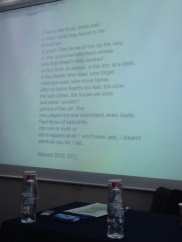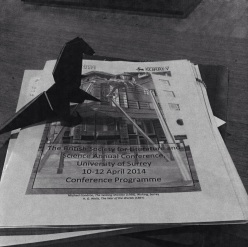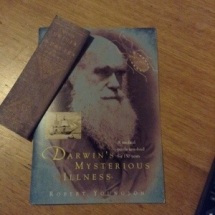Cadaver Speak, Arabic Science and Antediluvian Monsters at #BSLS2014
Just returned home from a scintillating three days at BSLS2014 hosted by the University of Surrey, where I met (and re-met) a whole host of kindred spirits working on things as diverse as surveillance fiction, Victorian toxicology, the Scottish new woman doctor, and dinosaur archaeology. Over the course of teas, coffees, lunches, papers, questions and plenaries I enjoyed the truly interdisciplinary spirit of lit/sci scholars. I gave a paper entitled “(Re)constructing the Knights of Science: Parasitologists and their Literary Imaginations,” heavily featuring my favourite research subject: Sir Ronald Ross.

From the collection “Cadaver Speak” by Marianne Boruch
Conference highlights for me included a particularly well put together panel discussing (among other things) the cultural significance of the Crystal Palace dinosaurs, and another discussing the parallels between bodily and social toxicity, as well as a thoroughly engaging tour of historically founding Arabic science by Jim Al-khalili. Julia Boll read out some haunting poetry as part of a collection that attempts to reinvest medical bodies with subjectivity, which led us onto a Medical Humanities inflected discussion about the work that Art does in relation to medicine. Bernard Lightman used a rather Holmesian method to deduce the connection between Arthur Conan Doyle’s eponymous hero and Georges Cuvier, taking us via Voltaire, Edinburgh Medical School and T.H.Huxley, and the conference was rounded off with a trip to the beautiful Down House.
Darwin’s home and gardens provided plenty of interesting artefacts as well as cream teas, garden walks and origami dinosaurs.
And I bought this exciting book (left) about Darwin’s mysterious illness by Robert Youngson which investigates the historical and medical evidence for the various theories (one of which, excitingly for me, includes the suggestion that he suffered from the parasitic infection Chagas’ disease!). It ultimately concludes, however, that Chronic Fatigue Syndrome is the most likely candidate.

Origami Dino tyrannising the BSLS conference pack
I’ll conclude with Three interesting things I learnt at BSLS:
– the word gibberish is attributable to the C9th chemist from Baghdad, Jabir ibn Hayyan, and his famously obscure prose
– H. Rider Haggard wrote books about farming
– The pterodactyl’s apparent universality of adaptation was described by victorians using references to Milton’s Fiend!
With thanks to Dr. Gregory Tate and all the members of BSLS for such a brilliant conference. I’m certainly looking forward to next year!





